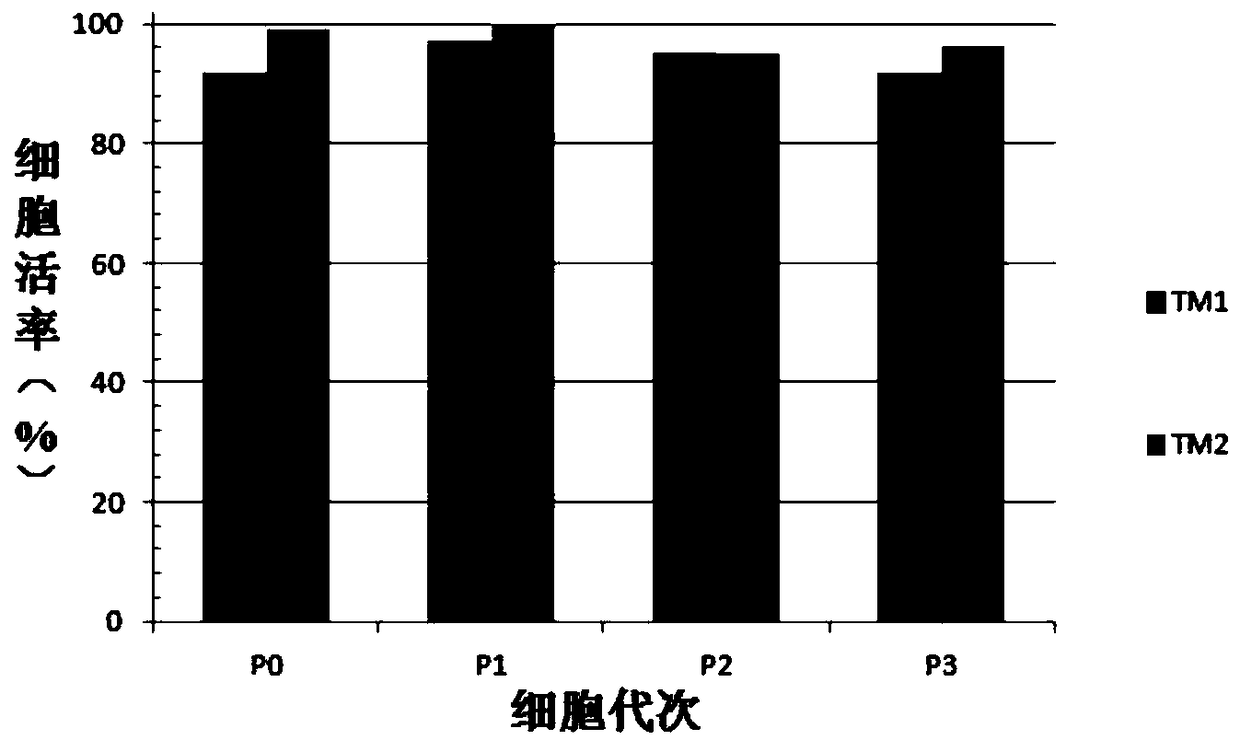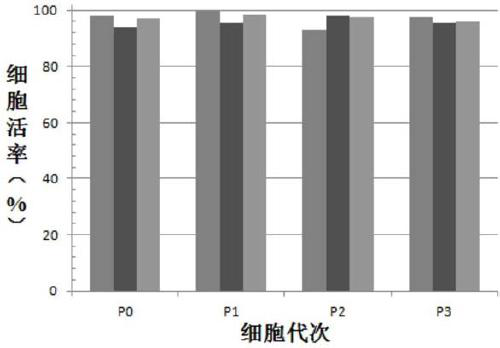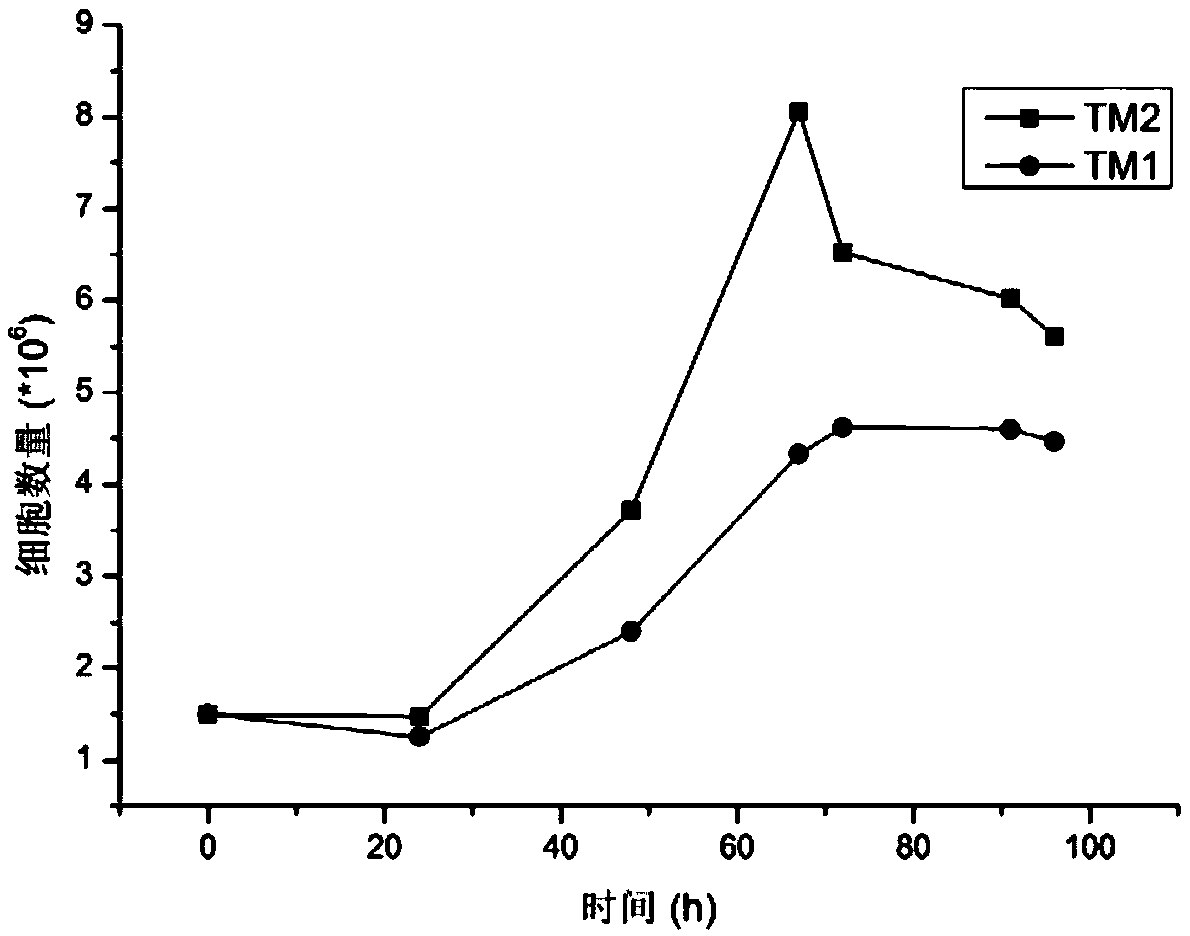Method for isolated culture of mesenchymal stem cells from fetal membranes
A technology for separating and culturing MSCs, applied in the field of separating and culturing mesenchymal stem cells, it can solve the problems of cell quality impact, complicated separation process, long operation time, etc., and achieve the effect of simplified separation process, high purity and strong proliferation ability.
- Summary
- Abstract
- Description
- Claims
- Application Information
AI Technical Summary
Problems solved by technology
Method used
Image
Examples
Embodiment 1
[0041] A method for separating and culturing mesenchymal stem cells derived from decidua from fetal membranes, including the following steps:
[0042] (1) Collect maternal blood before delivery for infectious disease detection, including syphilis, AIDS, hepatitis B, hepatitis C, etc., and select healthy full-term placenta;
[0043] (2) Cut the fetal membrane tissue at the edge of the placenta, cut it to an appropriate size, wash the fetal membrane tissue with tissue cleaning solution to wash away the blood, and then remove the residual blood vessel tissue on the decidua surface of the subfetal membrane wall, and proceed again Wash, use tissue tweezers to peel off the decidual tissue, place it in a petri dish to clean and remove the trophoblast and blood vessels;
[0044] (3) Transfer the separated decidua tissue to a 50mL centrifuge tube and cut to about 3mm 3 Add tissue cleaning solution to the tissue block, centrifuge at 700×g for 5 min;
[0045] (4) Add serum-free medium to the cle...
Embodiment 2
[0050] A method for separating and culturing mesenchymal stem cells derived from amniotic membrane from fetal membranes, including the following steps:
[0051] (1) Collect maternal blood before delivery for infectious disease detection, including syphilis, AIDS, hepatitis B, hepatitis C, etc., and select healthy full-term placenta;
[0052] (2) Cut the fetal membrane tissue at the edge of the placenta, cut it to an appropriate size, wash the fetal membrane tissue with tissue cleaning solution to wash away the blood, then peel off the amniotic membrane tissue with tissue forceps, and place it in a plate for cleaning ;
[0053] (3) Transfer the separated amniotic membrane tissue to a 50mL centrifuge tube and cut to about 3mm 3 Add tissue cleaning solution to the tissue block, centrifuge at 700×g for 5 min;
[0054] (4) Add serum-free medium to the cleaned amniotic membrane tissue for resuspension, and then inoculate it into a culture flask at a density of 6mg / cm 2 , The ratio of medium...
Embodiment 3
[0059] A method for separating and culturing smooth chorionic mesenchymal stem cells from fetal membranes, including the following steps:
[0060] (1) Collect maternal blood before delivery for infectious disease detection, including syphilis, AIDS, hepatitis B, hepatitis C, etc., and select healthy full-term placenta;
[0061] (2) Cut the fetal membrane tissue at the edge of the placenta, cut it to an appropriate size, wash the fetal membrane tissue with tissue cleaning solution, wash off the blood, and then use tissue forceps to peel off the upper layer of amniotic membrane tissue, and then peel off the smooth chorion Layer, place it in a petri dish for cleaning and remove residual blood vessels;
[0062] (3) Transfer the separated smooth chorionic tissue to a 50mL centrifuge tube and cut to about 3mm 3 Add tissue cleaning solution to the tissue block, centrifuge at 700×g for 5 min;
[0063] (4) Add serum-free medium to the washed smooth chorionic tissue for resuspension, and then i...
PUM
| Property | Measurement | Unit |
|---|---|---|
| thickness | aaaaa | aaaaa |
Abstract
Description
Claims
Application Information
 Login to View More
Login to View More - R&D
- Intellectual Property
- Life Sciences
- Materials
- Tech Scout
- Unparalleled Data Quality
- Higher Quality Content
- 60% Fewer Hallucinations
Browse by: Latest US Patents, China's latest patents, Technical Efficacy Thesaurus, Application Domain, Technology Topic, Popular Technical Reports.
© 2025 PatSnap. All rights reserved.Legal|Privacy policy|Modern Slavery Act Transparency Statement|Sitemap|About US| Contact US: help@patsnap.com



